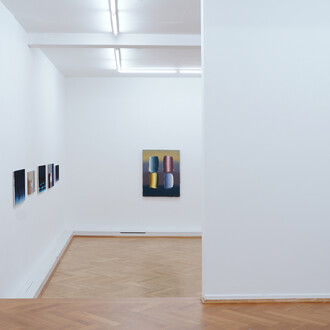The Altamira exhibition is a replica of the Stone Age ceiling paintings in Altamira, a cave in northern Spain that is now closed to the general public.
Altamira was found in 1879. It was the first cave to be discovered with Stone Age paintings.
At that time it seemed far-fetched that the paintings could be as old as they were claimed to be, namely about 15,000 years. Influenced by Darwin's theory of evolution, people still envisioned early humans as ape-like creatures incapable of complex mental activity or artistic achievements. Consequently, the Altamira pictures were promptly dismissed as forgeries. They were finally shown to be genuine only when more Stone Age caves were discovered in which the paintings could be dated more accurately in the overall context of the archaeological findings.
The paintings date back to the Upper Paleolithic period, the last phase of the Paleolithic, or New Stone Age.
It shows animals that lived during the Ice Age – a horse, a doe and above all a herd of bison – as well as abstract symbols. They are painted with brown, yellowish and red ochre paints, black manganese oxide and charcoal, and in some cases the images are engraved. The bisons in particular are painted in varying shades, making the animals appear astonishingly three-dimensional and lifelike. The lying bisons are painted on natural rock outcroppings, making them look like both paintings and reliefs.
In the room at the entrance to the Altamira cave, plaques provide general introductions to the Stone Age, the art from that period (with a reproduction of the "Venus of Laussel" stone relief) and in particular on cave painting.
A special entrance tunnel leads into the cave itself. It separates the dark space from daylight, and uses a cold trap to imitate the permanently cool and damp climate conditions of the cave, which preserved the ancient paintings until our time. The throngs of visitors hoping for a glimpse of the images in the original cave, bringing heat into the enclosed space, began to pose a threat to them. Consequently, the cave was closed to the general public and can now be viewed only by writing to book an appointment long in advance. Plaques on the inside of the cave provide information on the original cave and the complex process developed by the Deutsches Museum to build a replica that is accurate both in terms of form and materials.
















